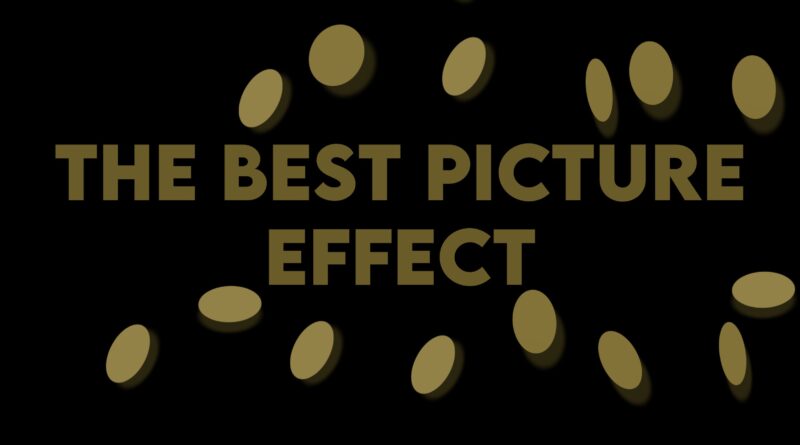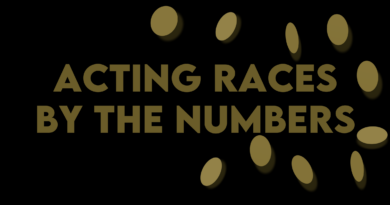The Best Picture Effect – Is it real?
Many people are talking about ”the best picture effect”, but what is it, and can it be based in facts?
To start out with the first question the best picture effect is the idea that Academy voters in any category tend to choose a Best Picture nominee when voting for the winners, rather than a non Best Picture nominee.
But is this just a theory based on a gut feeling? Or does the fact back it up? And if so, are there categories with a larger best picture effect than others? And has this changed since the introduction of more than five Best Picture nominees in 2010?
In order to find this out we need to look at two factors. First we need to see how many of the past winners in each category has been Best Picture nominees. Then we also need to look at how many nominees in each category has been Best Picture nominees, to see if there is an over representation among winners in the category.
Let’s take an example. From 2010 and forward 50% of all winners in the Best Visual Effects category has also been Best Picture nominees. But only 19% of all nominees in the Best Visual Effects category have also been Best Picture nominees in the same period. This means that on average there has been just one Best Picture nominee among the five nominees in the Best Visual Effects category, but every second year the winner would also be a Best Picture nominee. This way we can also score each category to see how big the best picture effect is. In this case, the difference between the share of winners who were also Best Picture nominees (50%) and the number of overall nominees who were also Best Picture nominees (19%) is 31. So let’s compare this to Best Director in the same period.
Every single Best Director winner since 2010 has been from a Best Picture nominated movie. However 95% of all Best Director nominees have also been from Best Picture nominees. This means the difference is 5. So Best Director has a smaller best picture effect than Best Visual Effects, but this has to do with the fact that almost all nominees for Best Director are Best Picture nominees. This means that, although the effect is smaller, it would be suicide to predict a non Best Picture nominee as a winner, as this is extremely rare in the category.
So in short, the number of category winners who are also Best Picture nominees tells you something about how likely it is that a Best Picture nominee will win the category. This is the number that is important when you do your predictions. The difference number (in this case 31 for Best Visual Effects and 5 for Best Director), tells you something about how much overrepresentation there is for Best Picture nominees. You can primarily use this to feed you inner geek. However, if a category has a high percentage of Best Picture nominees as winners AND has a high difference number, it means that you should definitely go with a Best Picture nominee in this category.
So let’s get to the numbers.
How we did it
We have gathered numbers from 15 of the 23 categories and looked at both recent and historical data. We have looked at how many of the winners in each category was also Best Picture nominees and how many of the overall nominees in each category that was also nominated for Best Picture. Then we also looked at the difference between the two percentage-numbers to get the difference number. All as also described in the examples above.
We have not included Best Picture, Best Documentary, Best International Feature, Best Animated Feature and the short categories. We have also not included Best Sound as this was split up in two up until last year.
The Best Picture Effect – Results
| BP nom. won category (since 2010) | BP noms. nominated in category (since 2010) | Dif. number (since 2010) | BP nom. won category (All time) | BP noms. nominated in category (All time) | Dif. number (All time) | |
| Best Director | 100% | 95,0% | 5 | 98,9% | 77,1% | 21,8 |
| Best Adap. Screenplay | 100% | 71,7% | 28,3 | 97,1% | 57,6% | 39,5 |
| Best Org. Screenplay | 100% | 70,0% | 30 | 66,7% | 33,9% | 32,8 |
| Best Editing | 91,7% | 93,3% | -1,6 | 83,9% | 65,7% | 18,2 |
| Best Actor | 91,7% | 70,0% | 21,7 | 78,5% | 56,3% | 22,2 |
| Best Supporting Actor | 91,7% | 68,3% | 23,4 | 57,6% | 51,3% | 6,3 |
| Best Cinematography | 91,7% | 65,0% | 26,6 | 77,3% | 49,1% | 28,2 |
| Best Org. Score | 83,4% | 58,3% | 25,1 | 68,4% | 40,5% | 27,9 |
| Best Production Design | 83,4% | 60,0% | 23,3 | 73,2% | 41,4% | 31,8 |
| Best Supporting Actress | 75,0% | 63,3% | 11,7 | 61,2% | 46,6% | 14,6 |
| Best Actress | 66,6% | 48,3% | 18,3 | 65,6% | 37,3% | 28,3 |
| Best Costume Design | 50,0% | 36,1% | 13,9 | 53,6% | 31,0% | 22,6 |
| Best Visual Effects | 50,0% | 19,0% | 31 | 33,8% | 17,7% | 16,1 |
| Best Makeup and Hair | 50,0% | 25,0% | 25 | 33,4% | 22,9% | 10,5 |
| Best Org. Song | 41,7% | 23,2% | 18,5 | 26,4% | 12,2% | 14,2 |
We can see that since 2010, all but four categories has been dominated by Best Picture nominees. We can also see that the percentage of Best Picture nominees nominated in each category has been higher en the last 12 years than the all time average. This is of course not surprising and we can also see that the average difference number is 22,3 for all time numbers and only 20 for the last 12 years.
With the exception of Best Editing since 2010, every category has an over representation of Best Picture nominees among the winners. So it is safe to say that there is a general Best Picture nominee bias in modern times. When looking at the all time numbers the bias gets smaller, but this makes sense as there were fewer Best Picture nominees in most years. So we could conclude that the Best Picture Effect is indeed real.
The big difference between Best Actor and Best Actress also shows that Hollywood still favors male stories, and the all time numbers show that this is not a new thing. We can also see that the percentage of Best Picture nominees nominated for Best Visual Effects is still only 19%, which is not much higher than the all time number of 17,7%, which tells us that the expansion of the Best Picture category has not favored the big tentpole films, which tend to be nominated in this category.




